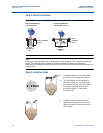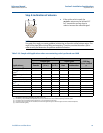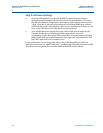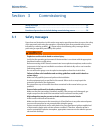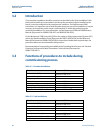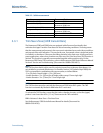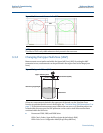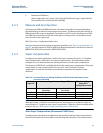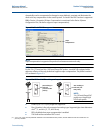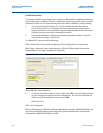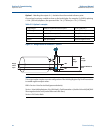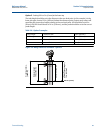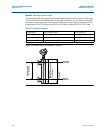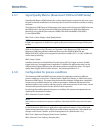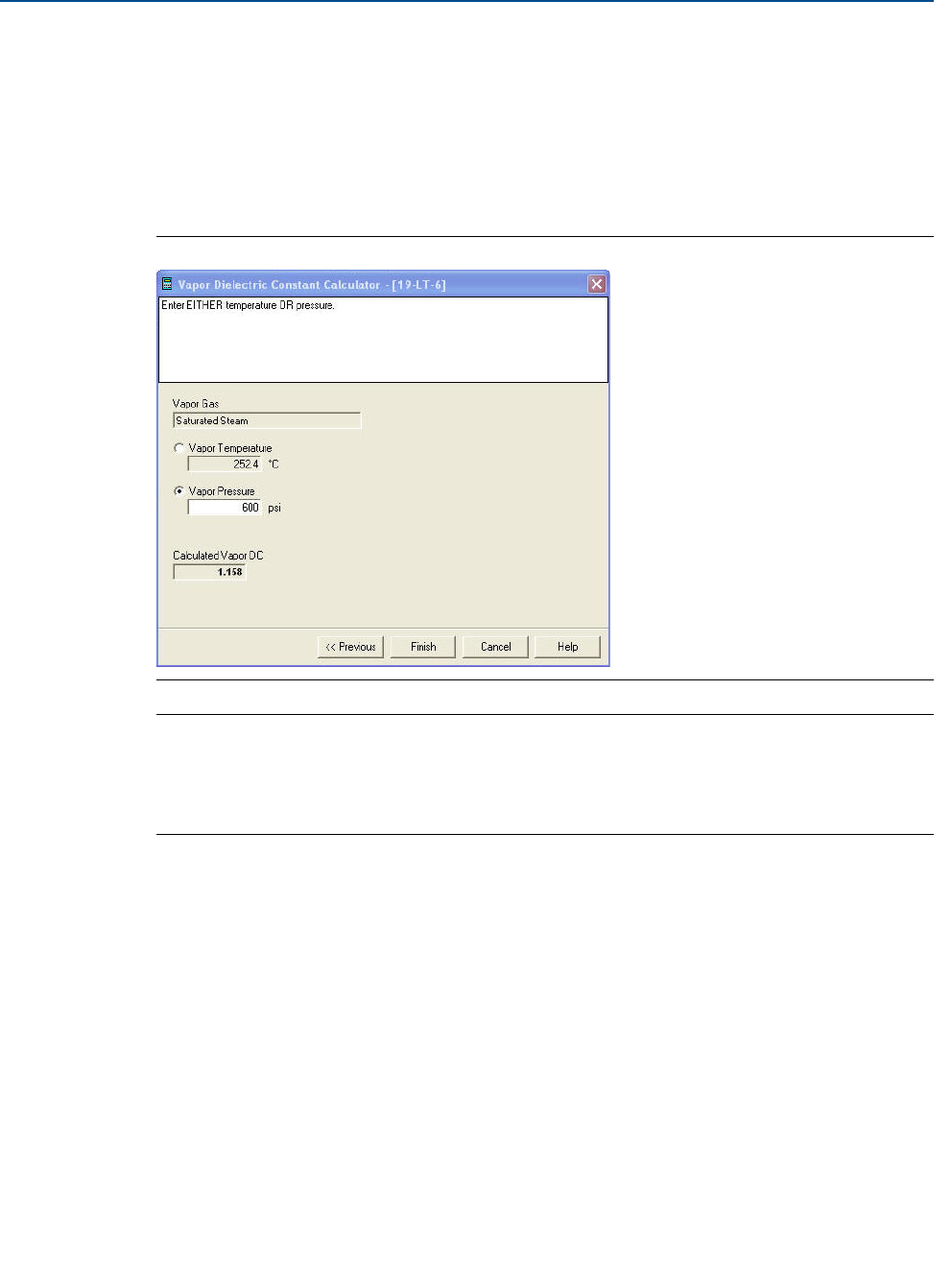
40
Reference Manual
00809-0700-4530, Rev AA
Section 3: Commissioning
September 2013
Commissioning
of a Rosemount 5300 Series level transmitter can be configured for static compensation of
vapor by manually entering the dielectric constant of vapor, to compensate for the error
induced by the saturated steam. For applications with a varying pressure and/or temperature,
certain models of the Rosemount 5300 Series have a built-in function (DVC), used along with a
special probe, that automatically compensates for varying vapor dielectric constants. See
section below for details.
RRM > Setup > Tank > Environment > Advanced Mode > Vapor Dielectric Constant Calculator
Figure 3-3. RRM Vapor Dielectric Constant Calculator
NOTE:
The saturated steam compensation is fixed and will only adjust the level reading at specified
conditions. This means that the transmitter shows a correct level reading during operation, but
not during startup and shutdown, when these conditions are not fulfilled. See Table 3-4 on page
39.
Dynamic Vapor Compensation (Rosemount 5300 Series)
While factory calibration of the 3 in. (75 mm) and 4 in. (100 mm) DVC probe and transmitter is
possible, it may be necessary to perform this calibration in the field if new electronics are
required or other options, such as remote head connection, are added at a later date.
2 in. (50 mm) DVC probes must be field calibrated at ambient conditions.
For the Rosemount 5301 with DVC option it is important that the vapor compensation function
is calibrated after installation. The calibration must be performed with an empty chamber at
ambient conditions.
The Rosemount 5300 Series with DVC uses a reference reflector mounted on the probe at a
certain distance to estimate the dielectric constant of the vapor. The transmitter knows where
the reference reflector pulse should have been if there were no vapor present. However, since
there is vapor in the tank, the reference reflector pulse will appear beyond the actual reflector
point. The distance between the actual reflector point and the apparent reflector point will be
used to calculate the vapor dielectric constant. The calculated dielectric constant is then



